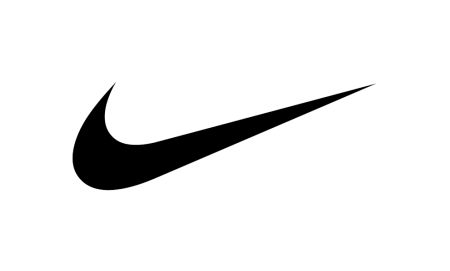We use cookies to improve the services we offer you. By continuing to browse this site, you consent to keep them in accordance with our Privacy Policy.
×We use cookies to improve the services we offer you. By continuing to browse this site, you consent to keep them in accordance with our Privacy Policy.
× 369
369
 14 min
14 min

Branding is often misunderstood as just creating a catchy logo. Think of Nike’s swoosh or McDonald’s golden arches. These symbols instantly connect us to the brands they represent. Yet, branding is an expansive concept. It’s about a memorable logo and crafting a comprehensive visual identity. This identity is a symphony of elements working in harmony.
In this article, we’ll talk about designing a cohesive visual identity. We explore how colors, typography, imagery, and other elements create a unified brand message. Our focus extends beyond logos to the entire visual identity spectrum. We will also provide insights and strategies for effective brand communication.
Let’s start with some basics.
Visual brand identity refers to the collection of visual elements that a company uses to communicate its brand. This aspect is critical for a company’s overall brand strategy, as it helps to establish recognition, trust, and credibility with the audience.
It aims to make a brand instantly recognizable and memorable. It should clearly convey the company’s values and personality. The visual brand identity helps to differentiate it from competitors and build a strong connection with the target audience.
Logos play a key role in branding. They are the main visual part of a brand’s identity. A logo makes a brand easily recognizable.
Logos serve as the most immediate representation of a company’s brand. They are a visual shorthand for the brand itself, often the first thing that comes to mind when a consumer thinks of a brand. The logo’s design, color, and typography can evoke specific emotions and associations. It contributes significantly to the overall brand perception.
While people sometimes use logos and symbols interchangeably in branding discussions, they serve distinct purposes. A logo typically combines text and imagery to communicate the brand’s identity. It often includes the company’s name, rendered in a unique font or style, along with a symbol or icon.
A symbol, on the other hand, is a graphic representation without text. For instance, take Nike’s Swoosh; it stands alone without the need to remember or recognize the company’s name. A well-designed symbol can cut across language and cultural barriers to deliver a powerful brand message.

The most effective logos are often simple. They avoid overcomplicated graphics or typography, which can confuse the message or make it difficult to reproduce across different media.
A good logo should also be effective across various platforms and applications, from a tiny logo on a mobile app to a large billboard. It should work in color and black and white.
Apart from the logo, a brand’s visual identity encompasses several key elements. Each element contributes to conveying the brand’s message, values, and personality.
The color palette is fundamental to a brand’s visual identity. Colors have the power to evoke emotions and convey messages. For instance, blue often represents trust and reliability, while red can evoke feelings of excitement and passion.
A well-chosen color palette ensures that brand’s visual communications are consistent and resonate with its target audience and helps establish brand recognition.
Typography involves the choice of fonts and how you use them in branding materials. The style of typeface a brand chooses can greatly influence its overall look and feel.
For example, a serif font may convey tradition and reliability, while a sans-serif font might appear more modern and approachable. Consistent use of typography across all brand materials, from website copy to marketing collateral, reinforces the brand’s character.
These can include photographs, illustrations, icons, and other visual elements. They should align with the brand’s values and message to create a visual narrative that complements the other brand elements. For instance, a brand focused on sustainability might use imagery that highlights nature and the environment.
The way you arrange visual elements in branding materials matters. The kind of layout and composition across various formats like brochures, website pages, and advertisements ensures a recognizable brand.
This includes the use of white space, alignment of elements, and the overall design flow. A well-structured layout can make the content more engaging and easier to understand.
Unique design elements such as specific shapes, lines, and patterns can become distinctive identifiers of a brand. These elements can add visual interest and depth to various materials while reinforcing the brand’s personality. You should use them consistently to enhance brand recognition and set the brand apart from competitors.
While not strictly a visual element, the brand voice and tone used in your communications greatly impact its overall identity. Whether formal, casual, friendly, or authoritative, they should align with the brand’s values and resonate with the target audience. A particular writing style complements the visual identity and helps build a cohesive brand image.
A brand’s online presence is extremely important nowadays. This includes the design of websites, visuals of virtual business card, social media profiles, email templates, and digital advertisements, which helps create a better brand experience for online audiences. A cohesive digital presence aligning with the visual identity strengthens brand recognition and engagement.
For product-based brands, packaging design is an essential component of visual identity. Packaging and merchandise should reflect the brand’s visual elements, including color, typography, and imagery. This consistency helps create a memorable unboxing experience and can turn packaging into a powerful marketing tool.
To maintain a cohesive visual identity, it’s essential to document all these elements in a brand style guide. Anyone involved in creating brand materials can use this guide for reference. It helps you make sure that all visual elements remain consistent across all touchpoints. It typically includes specifications for logo usage, color palette, typography, imagery, and other design elements.
User-generated content (UGC) has become a powerful tool in shaping and enhancing brand identity. UGC influences everything from consumer perception to brand loyalty and engagement.
UGC, which includes images, videos, social media posts, testimonials, product reviews, and more, offers a cost-effective way for brands to engage with their audience and foster a sense of community. People see this type of content as more authentic and relatable than traditional brand-generated content.
For instance, brands like GoPro, Lululemon, and La Croix have effectively used UGC to drive brand awareness and increase conversions. GoPro, for instance, sources content directly from its customers for its YouTube channel. It garners millions of views at virtually no production cost.
The integration of UGC with social commerce has also been significant. With the rise of shopping directly on social platforms, UGC has proven influential in driving conversions. About 79% of people say that UGC impacts their purchase decision. This makes it a valuable asset in the social commerce strategy.
UGC is affordable for smaller or emerging brands and helps create a visual narrative that resonates with the audience. They can use member-generated content to highlight their services and offerings.
Another key aspect of UGC is its ability to make a brand’s content more relatable. Brands like La Croix use UGC from a broad spectrum of their audience, not just brand loyalists. This approach helps create more inclusive content that reflects the brand’s diverse customer base.

Businesses can leverage various tools and resources to develop and maintain a strong visual brand identity. These tools help in designing, managing, and refining various aspects of a brand’s visual identity:
Incorporating these tools into your branding strategy can significantly aid in creating a cohesive and appealing visual identity that resonates with your target audience.
Branding strategies, particularly in visual identity, vary significantly across industries like technology, fashion, Fast-Moving Consumer Goods (FMCG), and others. Each sector has its unique approach to branding, shaped by industry standards, target audience, and product nature.
In the tech industry, branding often focuses on innovation and sophistication. Visual identities in this sector usually feature sleek, modern designs with minimalist aesthetics. Companies like Apple and Google utilize simple yet impactful logos and a clean, uncluttered design in their branding.
The color schemes are often neutral or monochromatic, emphasizing modernity and cutting-edge technology. The imagery used is typically abstract or symbolic. It represents innovation and forward-thinking.
Fashion branding is all about style, luxury, and trend-setting. Brands in this industry, such as Chanel or Gucci, often use elegant and sophisticated logos with a strong focus on typography. The visual identity in fashion branding is more dynamic and may change frequently to align with the latest trends.
The color is more diverse and bold. It aims to create a strong visual impact. Fashion brands also heavily rely on high-quality, visually striking imagery that showcases their products and conveys a sense of exclusivity and desirability.
Visual branding here is designed to attract immediate attention and convey a sense of reliability. Brands like Coca-Cola or Nestlé often use bright, bold colors in their logos and packaging to stand out on shelves.
The design elements are usually straightforward and easily recognizable. The imagery is often realistic, showcasing the product and its benefits directly. FMCG branding aims to create a sense of trust and accessibility, often using warm and inviting color palettes.
Each industry tailors its visual branding strategy to resonate with its target audience’s preferences and values and stand out in its market context. This leads to distinct branding approaches that reflect each sector’s unique character and objectives.
The impact of technology on branding, especially in visual identity, has been significant and transformative. Advances in digital marketing, social media, virtual reality (VR), augmented reality (AR), and artificial intelligence (AI) have revolutionized how brands interact with consumers and present themselves.
With the rise of digital marketing and social media platforms, brands now can reach broader audiences more efficiently. These platforms have enabled brands to utilize dynamic visual content, such as videos, animations, and interactive graphics, to engage with their audience.
For instance, using vibrant colors and playful graphics in social media campaigns can create a more engaging and memorable brand experience. Social media also allows brands to tell their story more personally and interactively. It fosters a deeper connection with their audience.
VR and AR technologies have opened new doors for immersive branding experiences. They allow brands to create unique, interactive environments where consumers can engage with products or services in a virtual space.
A furniture brand, for example, might use AR to let customers visualize how a piece of furniture would look in their home. These technologies enhance a brand’s visual identity by adding a layer of interactivity and experiential engagement that was not possible before.
AI is taking personalized brand experiences to another level. AI algorithms can analyze vast amounts of consumer data. They help brands understand their audience’s preferences and tailor their visual identity accordingly.
AI can help determine which color palettes, typography, and imagery resonate most with a target audience. AI-driven content generation also assists in maintaining brand consistency across various platforms. It can create compelling brand stories that align with its values and resonate with the target audience.
As we reach the conclusion of our exploration, it’s clear that effective branding extends far beyond the creation of a logo. It involves developing a cohesive visual identity that resonates with your audience and effectively communicates your brand’s values and personality. Three key takeaways from what we discussed include:
From here, apply the insights and strategies discussed here to your brand. Start by evaluating your current visual identity and identifying areas for improvement. Consider how emerging technologies can enhance your brand’s visual presentation and think creatively about how to incorporate user-generated content into your strategy.